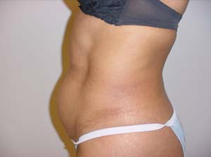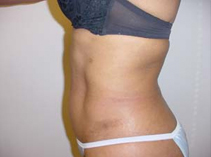Jump To
Inner and outer thigh liposuction is a targeted procedure designed to remove excess fat from the thigh area. Unlike traditional liposuction, which can be applied to various body parts, thigh liposuction focuses on contouring and shaping the thighs to achieve a slimmer, more proportionate look. This procedure is performed using specialized techniques for smooth results and minimal discomfort.
Liposuction for thighs can effectively treat both the inner and outer thighs. This procedure reduces chafing and improves the silhouette around the inner thighs, while also enhancing the overall contour of the outer thighs, commonly known as “saddlebags.” These targeted areas can result in a more streamlined and toned appearance.
The primary benefits of inner and outer thigh liposuction include:
Inner and outer thigh liposuction at Dr. Massey’s Santa Monica practice is performed without general anesthesia–alternatives will be discussed during the patient’s consultation. The procedure involves making small incisions in discreet locations, through which a thin cannula is inserted to remove excess fat. The surgeon carefully sculpts the thigh area to create a smooth, natural contour.
Patients generally experience minimal pain during thigh liposuction due to the use of anesthesia. Post-procedure, some discomfort, swelling, and bruising are common, but these symptoms typically subside within a few weeks. Most patients find that any initial discomfort is manageable and well worth the transformative results.
As with any surgical procedure, there are potential risks and complications with thigh liposuction. These may include infection, uneven contours, scarring, and changes in skin sensation. However, choosing a highly experienced surgeon like Dr. Ralph A. Massey minimizes these risks. All patients receive thorough pre- and post-operative care instructions to further reduce the likelihood of complications.
The results of inner and outer thigh liposuction can be long-lasting, provided patients maintain a stable weight and healthy lifestyle. While the removed fat cells do not return, remaining fat cells can expand if significant weight gain occurs. We recommend patients to exercise regularly and maintain an appropriate diet to preserve the slim, contoured look achieved through thigh liposuction.
"Dr Massey, you are a rarity today and a fine representation of what a doctor should be… caring for the patient above all else. Thank you most deeply for your beautiful work on my nose. Thank you most especially for seeing me through a very traumatic experience with outstanding care, sensitivity and professionalism."
For Dr. Massey safety is the first priority with any surgery. He has personally performed hundreds of liposuction surgeries, and none of his patients has had any type of serious complication. Indeed in a recent study of over 15,000 patients treated with tumescent liposuction there was not a single serious complication.

